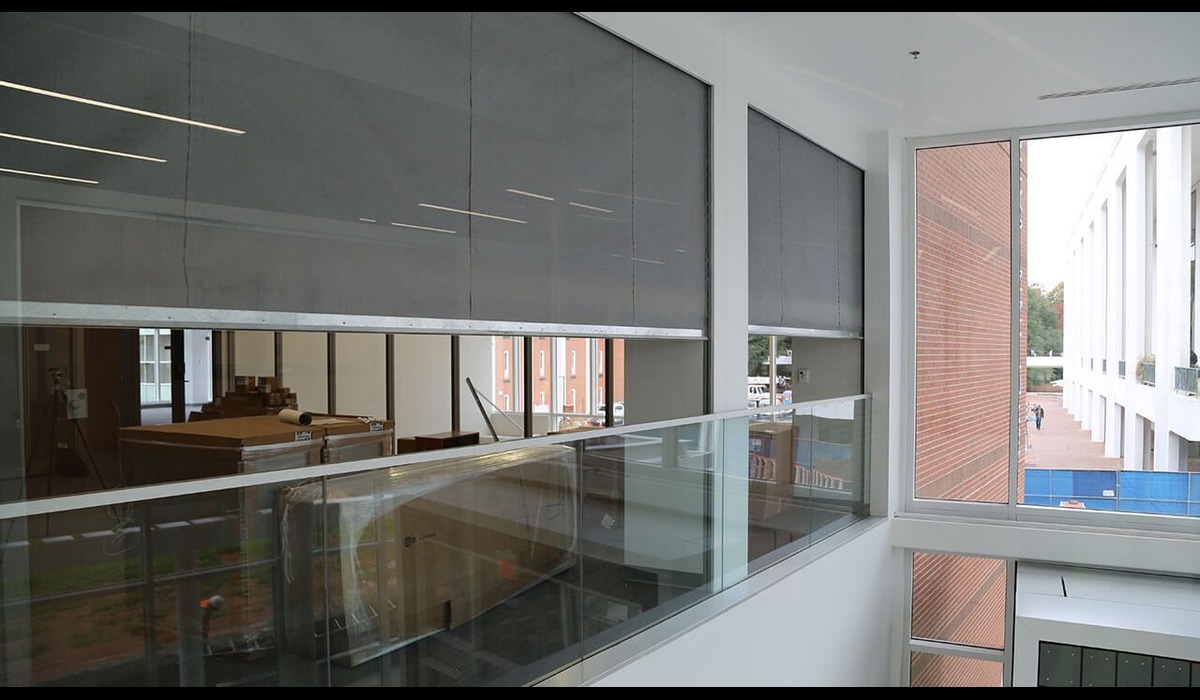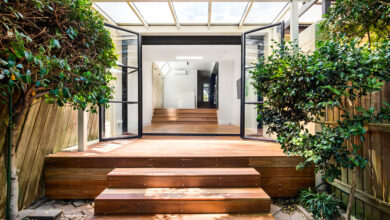Fire safety can benefit from measures that give enough time to responders to evacuate occupants of the affected building.
Smoke curtains are one of the ways we can ascertain this, reducing risks of life and property damage from smoke spreading.
About Smoke Curtains
Smoke curtains are fire-resistant fabric barriers created to deter smoke from spreading within a building.
Usually, they are made of fiberglass fabric that has been coated with a special material that does not catch fire. This makes them resistant to smoke and high temperatures.
These curtains are put up in housings that are hidden in the ceiling or walls. They won’t jump into action until a fire alarm or smoke detector goes off.
Working
When a fire alarm goes off, smoke curtains automatically rise from their housings and create a wall between the fire and the areas around it. The curtains are meant to seal tightly against the floor or any other obstacles, dividing the room into separate areas and keeping the smoke in those areas.
Other fire safety systems, like smoke extraction systems and sprinklers, work well with smoke curtains to strengthen the general fire protection plan.
These curtains prevent smoke from spreading, improving air quality and visibility. This helps firefighters reach troubled areas much faster while people get to leave safely.
Applications
You can use smoke curtains in a number of places:
Open-plan offices and commercial spaces: In contemporary open-plan designs, smoke curtains compartmentalize large areas, keeping the smoke separate. This makes evacuation safer.
Shopping malls and retail centers: These high-traffic areas usually have open atriums and walkways, where smoke curtains can help contain smoke and guide occupants to exits.
Hospitals and healthcare facilities: Smoke curtains isolate patient wards or operating theaters, protecting those vulnerable and securing continued operations in untouched areas.
Transportation hubs: Airports, train stations, and other transportation terminals can benefit from smoke curtains, which can help manage smoke in large open spaces and stop it from spreading to critical areas.
Atria and lobbies: When it comes to buildings with multiple stories of atria or lobbies, smoke curtains are a lifesaver. They trap smoke in one place, making it easier to evacuate to lower floors when a fire breaks out.
Shafts: Lifts can act like chimneys distributing smoke throughout the building in fires. Smoke curtains installed above their doors stop smoke from spreading through the shaft and into the building.
Benefits
Compartmentalization
Smoke curtains cut smoke spread and make evacuation safer by dividing large spaces into smaller compartments.
Visibility and breathable air
Smoke curtains improve visibility and breathing for occupants and firefighters and consequentially, mobility, by containing smoke.
Flexibility and aesthetics
Smoke curtains blend into many building styles and are undetectable. They protect against fires while saving the aesthetics of open-plan areas.
Cost-effectiveness
Smoke curtains can be cheaper than fire-rated walls or partitions, especially for retrofitting or design changes.
Compliance with regulations
To make sure that buildings meet the necessary safety standards, smoke curtains are made to work with fire safety rules and building codes.
Maintenance and Testing
Regular testing and maintenance are needed to make sure that smoke curtains are in good shape and ready to use in case of an emergency.
Manufacturers’ instructions and relevant standards for regular testing and inspection should be followed by building owners and facility managers.
As part of maintenance, parts may need to be replaced, inspected visually, or tested to see how they work. Maintaining and testing activities must be properly recorded to show compliance with regulations and make sure the fire safety system continues to work.
If you need any help regarding smoke curtains, contact A1S Group.




